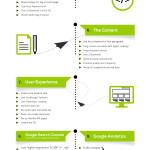Evergreen content—content that remains relevant and holds value over a long period of time—is one of the strongest drivers of consistent organic traffic to your website. Not only does it survive the fast-paced changes in the digital sphere, but also it attracts visitors to your site again and again.
In the context of content marketing, evergreen content can take many forms, from blog posts and case studies to product and category pages. Even though your website can’t thrive solely on evergreen content, it’s an essential part of any successful on-page SEO strategy.
Here’s a brief overview of evergreen content, which will provide answers to questions such as: What makes content evergreen? Why should you use it? And finally, how can you create it yourself?
Why Evergreen Content?
The main reason for making evergreen content a significant part of your SEO content strategy is because of the positive effects it can have on your website’s traffic. High-quality, optimized content will not only push your website to the top of search engine results pages (SERPs), but also regularly generate social shares.
Furthermore, evergreen content helps establish your brand as a source of expertise in your industry. Then, as your site gets more visibility, your content will also gain credibility as users see that it’s resonating with other readers. A piece that has brought about hundreds of social shares or that appears among the first entries in SERPs clearly signifies quality and timeliness and is thus more likely to be trusted by its target audience.
Evergreen content is focused as much on users as it is on SEO: it’s the users who make a piece of content evergreen by consistently reading, sharing, and commenting on it. On the other hand, without high-quality optimization, your content may never reach your intended audience in the first place—which is why you need to oversee both sides of the equation to make it work.
What Makes Content Evergreen?
The main traits that distinguish evergreen content from other types of content are quality and relevance.
In order for your content to achieve its maximum effect, it must be able to meet the varying needs of your audience. In other words, evergreen content can answer a range of questions for different users, but it should still be applicable to all of them. Some will be looking for up-to-date, detailed information from your writing, while others may want a more general overview of a particular subject.
Other aspects of evergreen content include:
- A compelling headline and clear structure
- Readable, straightforward copy
- Reliable, factual, and timely information
- Optimized for SEO
Which Types of Content Are Evergreen?
Any piece of content with the ability to stand the test of time—regardless of changes in the industry or the services and products you offer—has the potential to become evergreen, and can come in a variety of text- or video-based formats, including:
- Definitions, explanations, and guides
- Lists, tips, tutorials, and “how to” content
- Product reviews
- Case studies, whitepapers, eBooks, and reports
- FAQs
Conversely, anything that’s too time-bound typically has trouble qualifying as evergreen. This includes:
- Yearly reports and statistics
- Content about trends and current developments
- Seasonal materials (unless little has changed in your industry and content remains applicable from one year to the next)
- News articles and event-related stories
Note that some case studies and reports have the potential to become evergreen. Oftentimes, when writing a blog post or whitepaper, writers seek out older reports during the research process. So although these types of resources are time-bound, their value is still high from a research standpoint.
Furthermore, since these two types of content usually cover a longer period of time, you can expect them to gain momentum when they’re most relevant, and then continue to bring in traffic even after they begin to lose their timeliness.
How Is Evergreen Content Created?
Evergreen content creation involves a number of steps. First, you’ll need to come up with a topic. To do this, research which kinds of content generate the most interest over time among users in your field. Article comments, social conversations, and your competitors’ strategies all can give you inspiration. Researching keywords—preferably long-tail ones—can also help pare down your topic.
When choosing a topic, keep in mind that your evergreen content should find the balance between being broad, which usually lacks specificity, and overly narrow, which can be far too technical or niche. Instead, it needs to offer concrete advice that people can come back to time and again. With the topic identified, decide on the format in which it will be delivered to your audience.
In terms of on-page SEO, there are a number of ways to optimize your content. Picking one or more promising keywords to place within your writing is a good starting point. Then, apply the following tips to reinforce your SEO effectiveness:
- The page title, URL, meta description, and image alt-tags need to be in line with your top keywords and overall theme.
- The headings and subheadings need to be striking and actionable.
- Internal and external links are musts, but they should be chosen carefully to ensure they offer further value to readers. If, for example, you’re optimizing product category pages, focus on having a clear link structure, and make sure it’s set up so that your site is easily crawlable.
- Site speed and mobile optimization can further strengthen your writing by making it more easily accessible.
In order to stay relevant to your audience, your evergreen content ideally should be updated every two-to-three months. This will also indicate to Google that your content is fresh, something its algorithm favors.
Once revised, your article, blog post, or other type of content should clearly state that it’s been updated. You can also return to evergreen posts that are becoming outdated and link them to more recent ones, especially if they deal with a fundamental change concerning your industry. Then, recirculate them on your social media platforms. Letting your audience know that you’ve updated your content will further boost engagement.
Is Evergreen All You Need?
You can’t rely entirely on evergreen content, as there’s a limited amount that you can produce. So you’ll also need to produce content that eventually will become irrelevant, but also will engage readers who seek out the latest news.
On the other hand, putting all your efforts into time-bound content isn’t a good option, either—it won’t cause as much traffic over a long period of time as evergreen content.
Ultimately, the best strategy is to write a mix of both types of content in a variety of formats so that you not only can attract a greater number of users, but also generate more traffic and leads.









